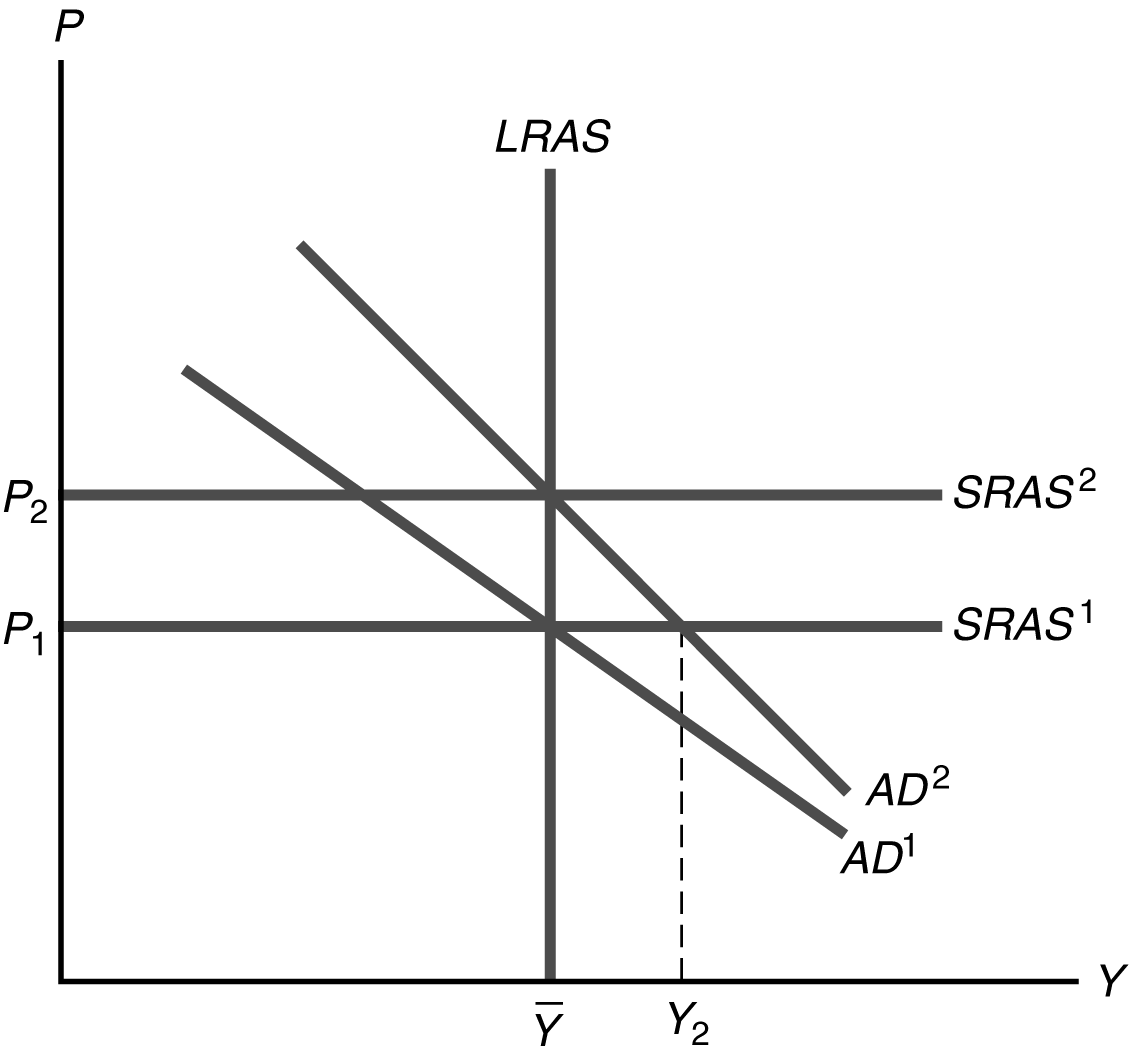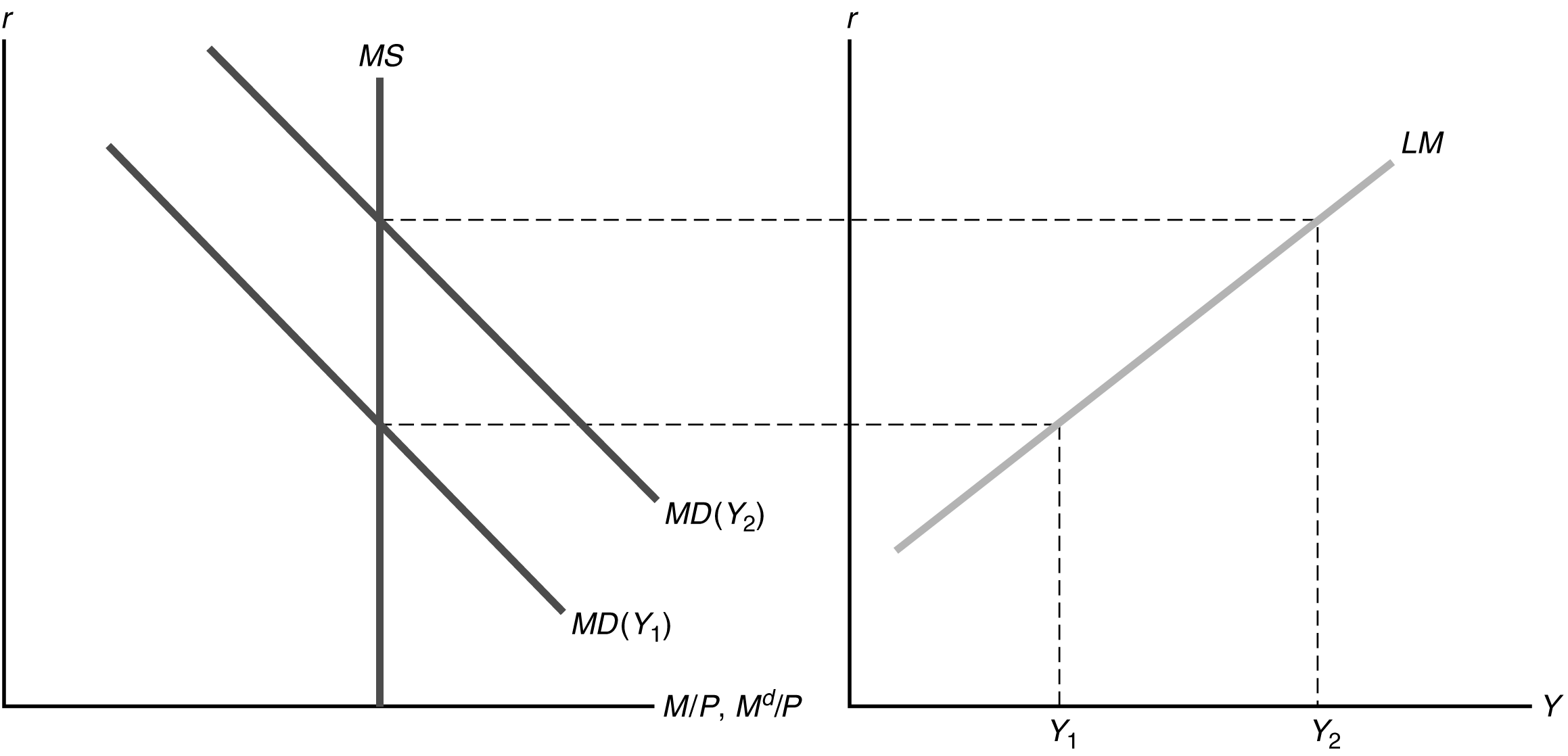4. (a) A temporary increase in government
purchases reduces national saving, causing the
real interest rate to rise for a fixed level of
income. If the real interest rate is higher,
then quantity of real money demand will be
lower. So prices must rise to make money supply
equal money demand. The result is that output is
unchanged, the real interest rate increases, and
the price level increases.
(b) When expected inflation falls, real money
demand increases. With no effect on employment
or saving and investment, output and the real
interest rate remain unchanged. With higher
quantity of real money demand and an unchanged
nominal money supply, the equilibrium price
level must decline. So output and the real
interest rate are unchanged and prices decline.
(c) When labor supply rises, full-employment
output increases. Also, with higher output,
saving will increase, so the real interest rate
will decline. Both higher output and a lower
real interest rate increase real money demand.
The price level must decline to equate money
supply with money demand. The result is an
increase in output and a decrease in both the
real interest rate and the price level.
(d) When the interest rate paid on money
increases, real money demand rises. With no
effect on employment or saving and investment,
output and the real interest rate remain
unchanged. With higher real money demand and an
unchanged nominal money supply, the equilibrium
price level must decline. So output and the real
interest rate are unchanged and prices decline.


